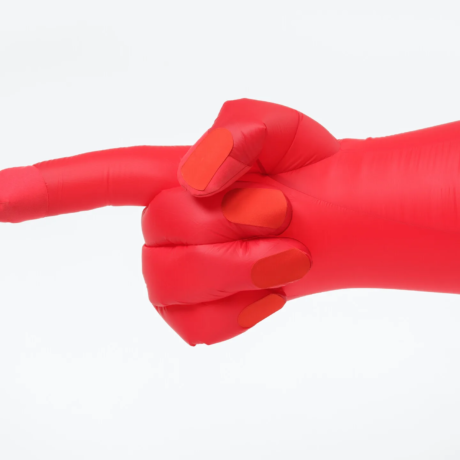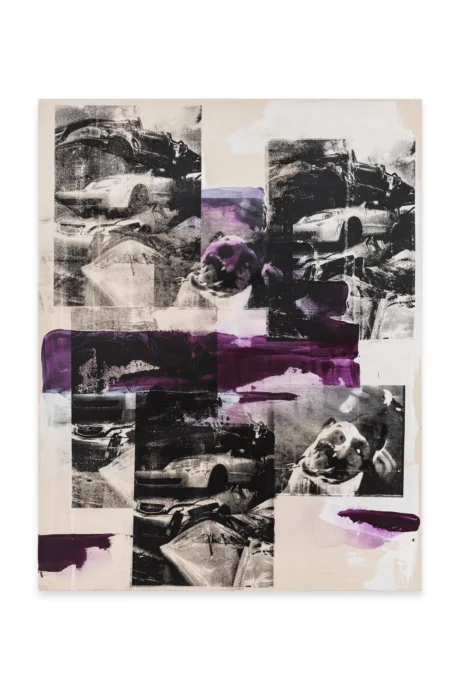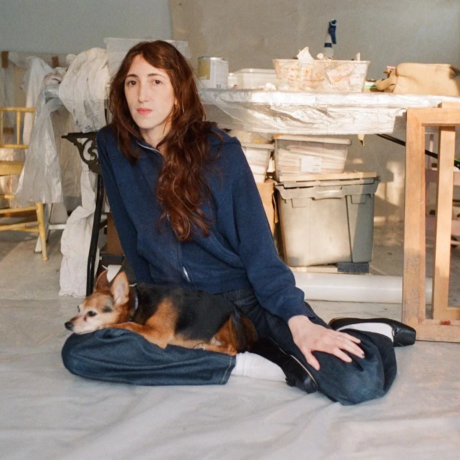At Hauser & Wirth, Nairy Baghramian’s uncanny, corporeal yet artificial shapes assume various stages of rest within the white-walled gallery. Propped and prodded by their own parts, the sculptures hint at the ineffable.
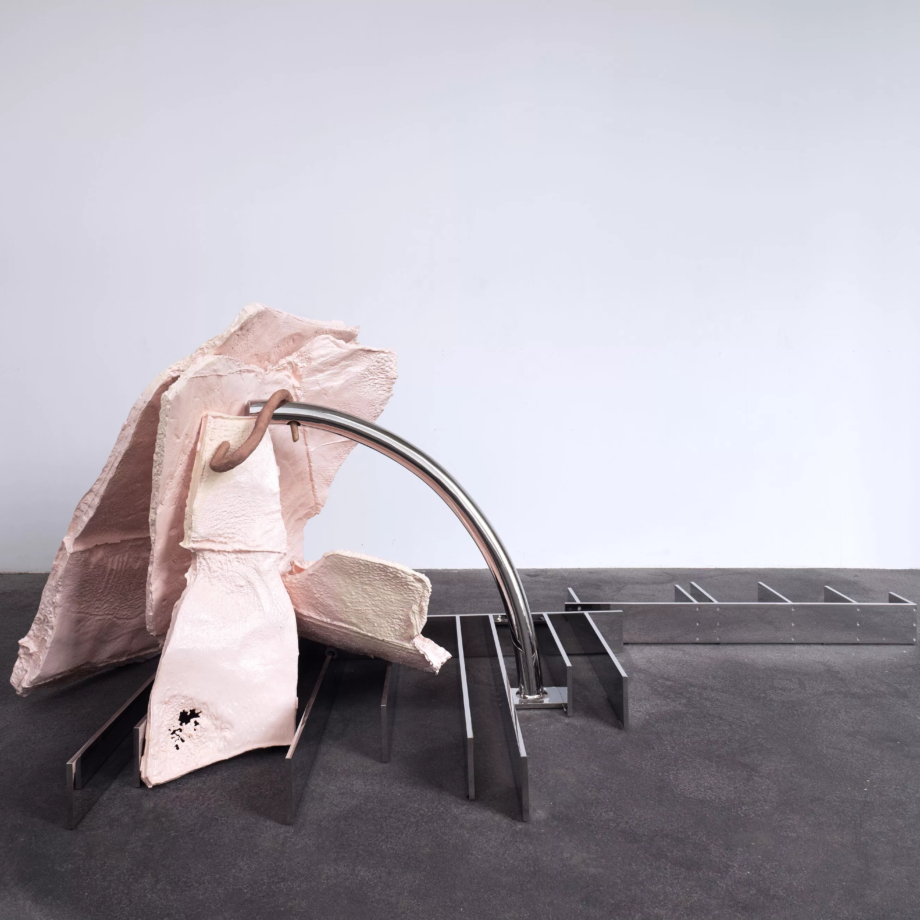
To speak something into existence is to summon its opposite: what it is becomes shaded by what it is not. Organic and artificial, corporeal and sterile, hard and soft, humorous and severe, objective and autobiographical, cerebral and somatic, nonfigurative and human-like: Nairy Baghramian’s disarming practice operates within a liminal space that eschews binaries for a malleable, third alternative beyond the confines of language.
Baghramian’s work does not simply proclaim “art does not exist in a bubble.” It pops it. For the artist, context is key. It extends beyond the confines of the object and into everyday life. In an attempt to evade gesturality and figuration, to forgo anthropomorphic qualities for those of abstract shapes, Baghramian’s sculptures arrive at their inverse, slouching and slinking. Is it possible to stage human poses and gestures while avoiding figuration entirely? When considering the artist’s oeuvre, the question takes precedence over the answer. To name the shapes that these sculptures are hinting at would be to impose and project, to bring the outside in, to negate the other possibilities. Yet, the names arrive with a flood of associations, alive, evocative and dependent on the viewer’s point of entry.
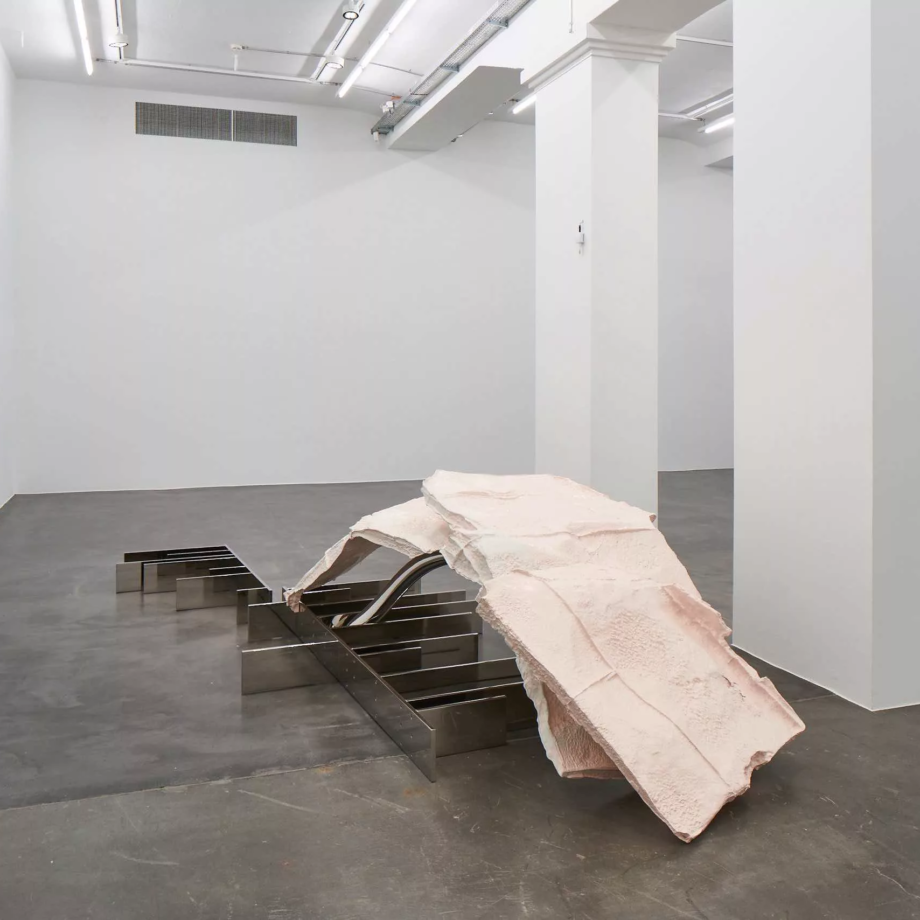
In Baghramian’s new solo exhibition Modèle vivant (Se ployant)(2024)—which opened at Hauser & Wirth in Zurich last week—an installation of large-scale Frankensteined sculptures slump and simmer in the corners of the pristine white walls of the gallery. Entryways and windows are met with these beguiling shapes. Beyond the meticulously rendered works themselves, the entire floor plan has been given careful consideration: the space held, the negative space in-between, the space intercepted and intervened, and the space circumvented.
For over three decades, the artist has pushed and probed what sculpture is and what it can be. The soft colours and amorphous shapes of her abstract forms—rendered in steel, silicone, bronze, and resin, among others—hint at human postures, prosthetic devices, amputated knees and elbows. They are never easy to pin down, with their tendency to take up space, extending to walls, facades, and courtyards in the spaces in which they are shown.
Sculpture also functions as a point of departure for the artist whose practice spans photography, drawing, writing, and curation. Her regenerative practice deals in structures both theoretical and physical, including notions of gender and politics, art history, and the body. She has also been known, often, to employ the work of others, going so far as to put on exhibitions where her own work lacks any presence at all. Until recently, the personal was impenetrable for Baghramian.
In Se ployant (soufre)(2024), pale rosy pock-marked and scarred sheets draped over rectangular, stainless steel structures (reminiscent of Donald Judd’s boxes) alchemize into ineffable shapes. A curved bar reveals itself as a system of support—an idea the artist toggles with in her practice, both figuratively and practically. In a second a sculpture, Se ployant (gris de lin) (2024), peeks out from behind the building’s white columns, a mass of blush cast-aluminium slabs teetering on the brink of the bodily, propped up by a hook affixed to a bar.
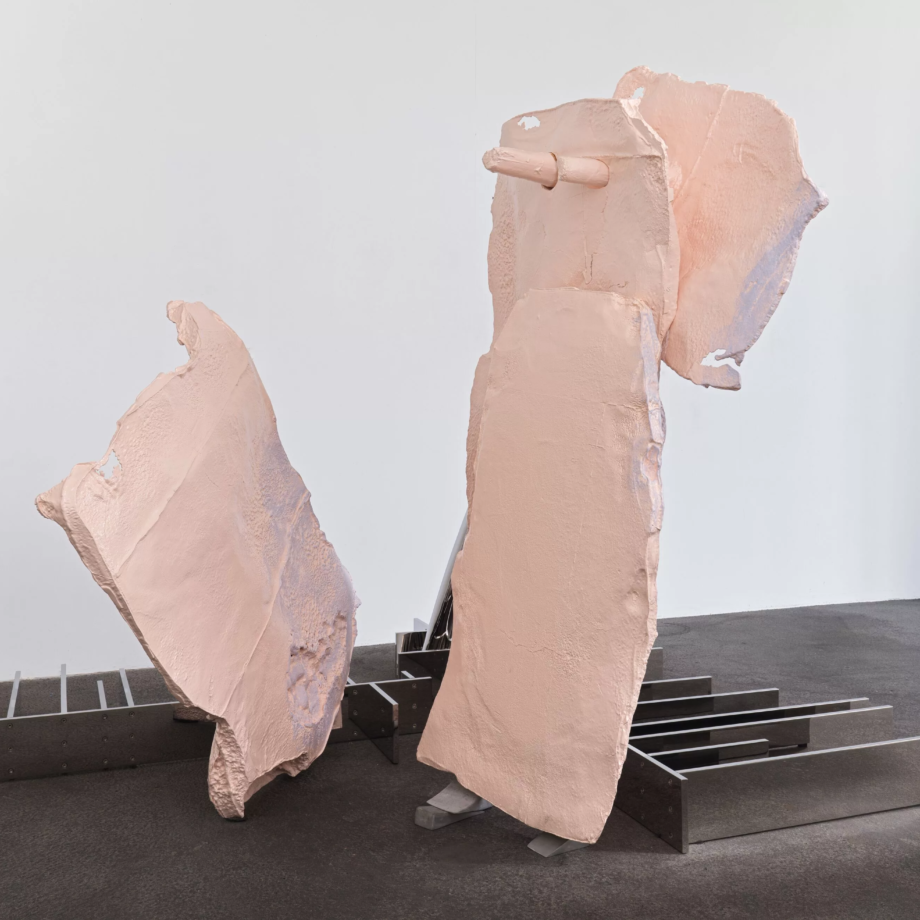
Together, eight works in various stages of repose make up the artist’s series Modèle vivant (Se ployant), initially conceived in 2022 for her exhibition at the Nasher Sculpture Center in Dallas, Texas, in conjunction with her reception of the Nasher Prize the same year. Notably, all of the works bear the same primary title, Se ployant, with a unique adjectival word following in parentheses (see: Se ployant (soufre)).
For the Nasher exhibition, Baghramian staged her forms next to sculptures from the museum’s permanent collection, including those by Paul Gauguin, Louise Bourgeois, Ana Mendieta, and Isamu Noguchi. By doing so, she handed off the responsibility of explanation or adding context (in the case of her own work) to the work of her predecessors, as well as, of course the institution itself. The artist presented her own work as an interlocutor between past and present, continuing a pattern of refusing to imbue her objects with her own personhood. Yet, here, she exposes a crack in the armour and invites her own psyche to shine through more explicitly, a turning point for the artist who rejects art as a symbol of identity. For the first time, she addressed her childhood in Iran, coaxing to the surface hidden memories. This comes at a historically significant moment, while a new wave of protests sweeping her motherland begin making the global news.
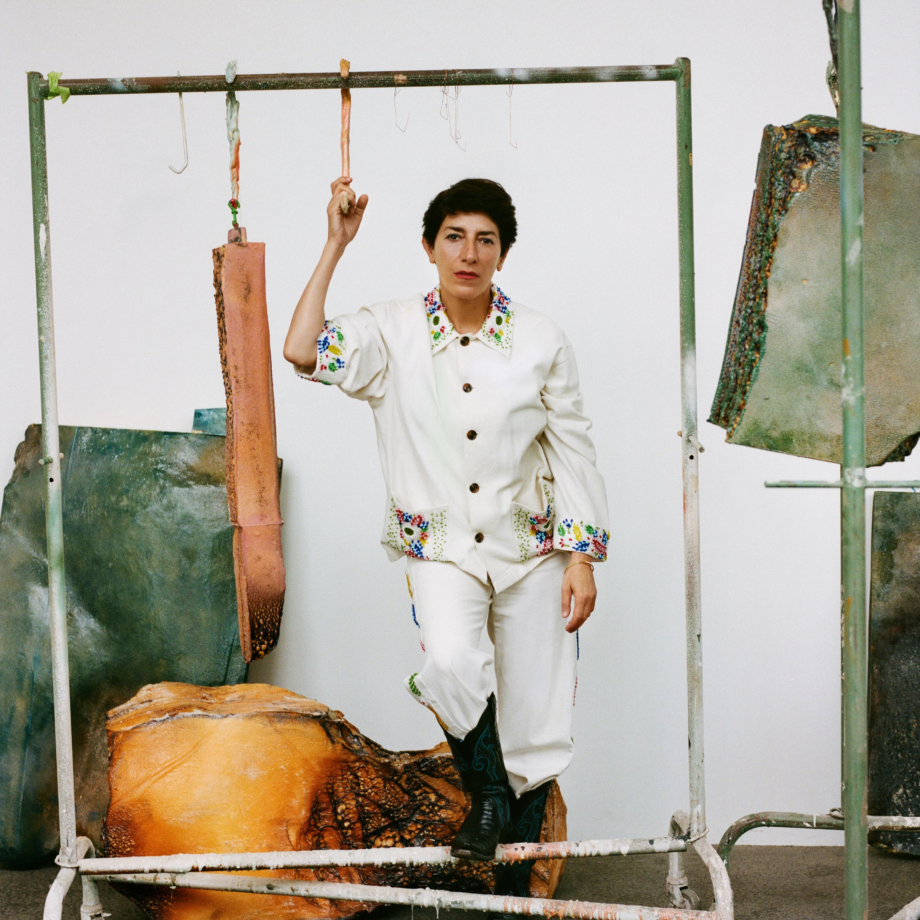
As her autobiography goes, the Berlin-based artist was born in Isfahan, Iran, in 1971. As a teenager, she moved to Germany with her family to seek refuge following the 1979 Revolution, the country’s response to the transition from monarchy to Islamic Republic. To say Baghramian carries this history with her is perhaps understated, yet there is a strain and structure to her forms that hints at unspoken resilience and underpinnings of trauma, those unsayable sights and stories.
To take us back further, her 2011 Venice Biennale presentation Formage de tête (forming of the head) referenced both sculptural and culinary techniques in a metaphor extended across slabs of neutral-toned silicon stretched across a tall steel table, objects recalling the kitchen, and images of a subject in a chef’s hat and jacket, chin turned down, face obscured. Here, and in many of Baghramian’s installations, photography holds a fixed centre.
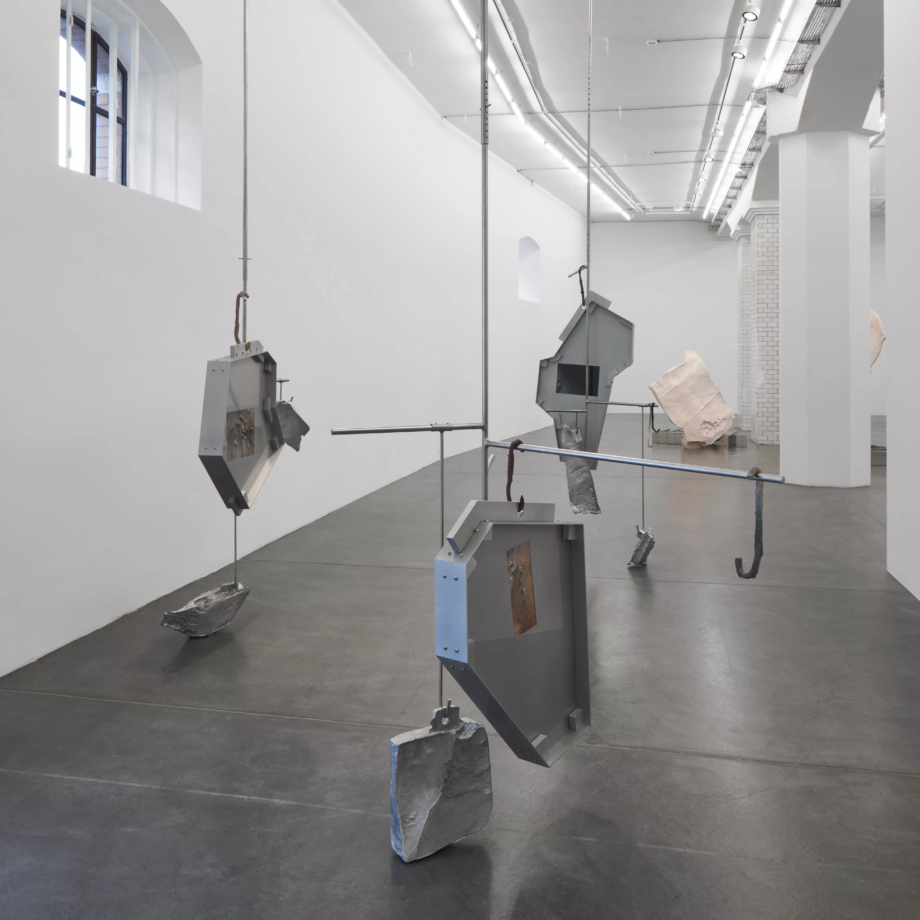
For her 2014 installation at the Art Institute of Chicago, she installed French Curve (2014) in the museum’s terrace, framed by a white spiked fence, the city’s skyline looming in the background. The sculpture, a set of pale yellow barriers, curves in a U-shape, like a mould of gums. Inside, pale, limb-like shapes stand in vitrines facing the Art Institute’s restaurant, in a piece titled Slip of the Tongue (2014). Last year at the Aspen Art Museum, the artist brought displayed works from over the past decade along with new sculptures, joined together for the first time. She called the exhibition Jupon de Corps. Together, the works opened up a multi-channel dialogue that bounced off each shape. She also created a series of works titled Scratching the Back for the The Met Fifth Avenue’s facade commission series, in which colourful (a departure from her muted palette) aluminium rock-like formations, cast from chunks of Styrofoam, framed by ribbons and grids were precariously wedged between the building’s neo-Classical plinths.
Now at Hauser & Wirth, the artist continues to expand while simultaneously doubling down. In S’accrochant (encre), 2024, an aluminium and steel structure is suspended from the ceiling, reminiscent of one of Alexander Calder’s kinetic mobiles. Close-up prints of flies on an animal’s fur hint at dual signs of lifelessness or life, placid and vibrating. These narrative-building punctuations of life make a mark on the slippery assemblage yet offer little resolution as to who, what, where, when, or why. Each photograph is too zoomed in to betray rhyme or reason beyond the artist’s lens, leaving the rest to speculation. Yet one can imagine a stillness and sensitivity that would be required to capture the insects in repose and leave the animal unbothered.
Words by Meka Boyle
